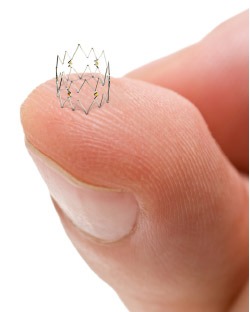
The TOBA BTK (Tack Optimized Balloon Angioplasty Below the Knee) clinical trial results have recently been published in Catheterization and Cardiovascular Intervention. The multicentre pilot study focused on collecting data supporting the safety and performance of the Tack Endovascular System (Intact Vascular) in subjects with critical limb ischaemia (CLI) due to vascular disease below the knee.
Thirty-five subjects were enrolled at six sites in Europe and New Zealand in the TOBA BTK study, which targeted diseased tibial arteries for dissection repair following plain balloon angioplasty.
The analysis of the TOBA BTK data demonstrates one-year primary patency via Kaplan-Meier estimate of 77.4%. Additionally:
- 93.5% freedom from Clinically Driven Target Lesion Revascularization (CD-TLR)
- 93.5% freedom from Clinically Driven Target Vessel Revascularization (CD-TVR)
- 84.5% amputation-free survival (AFS).
“The number of patients being treated for critical limb ischemia is rapidly growing, making it vitally important to optimise post-angioplasty results and minimise metal burden to improve blood flow and allow wound healing,” commented Marianne Brodmann, head of the Clinical Division of Angiology, Medical University Graz, Austria. “I believe that the Tack Endovascular System provides a promising option to treat post-angioplasty dissection in this very challenging patient population.”
The TOBA BTK multicentre pilot study was the first known industry-sponsored study designed to investigate a permanent vascular implant in arteries below the knee for focal dissection repair. The Tack implant is a first-of-its kind device for precision dissection repair following balloon angioplasty. The system is designed to help maintain vessel integrity and improve blood flow to promote healing, improve outcomes and preserve limbs. The system leaves a minimal amount of metal in the artery, reduces mechanical stress on the arterial wall and preserves future treatment options. Unrepaired dissections—which are frequent following balloon angioplasty—increase the probability of acute arterial occlusion and may continue narrowing the artery, which leads to lower long-term patency rates.
“We are very pleased with the results from the TOBA BTK study and the expanding publication of peer-reviewed clinical evidence supporting the Tack Endovascular System,” said Bruce Shook, Intact Vascular’s president and CEO. “As we previously reported, we are on track to complete our pivotal TOBA II BTK clinical study enrolment earlier than originally planned, and we are thankful to our committed investigators who are eager to have more approved therapeutic options to treat their patients with CLI.”
Intact Vascular is sponsoring three clinical trials to evaluate its Tack Endovascular System: TOBA II, TOBA II BTK and TOBA III. TOBA II is investigating the combination of the Tack device with both plain and drug-coated balloon angioplasty in the arteries above the knee, and completed enrolment in March 2017. TOBA II BTK is investigating the combination of the Tack device with plain balloon angioplasty in the arteries below the knee and is actively enrolling patients. TOBA III has nearly completed enrolment in Europe and is investigating the combination of the Tack device with drug-coated balloon angioplasty, inclusive of long lesions.













